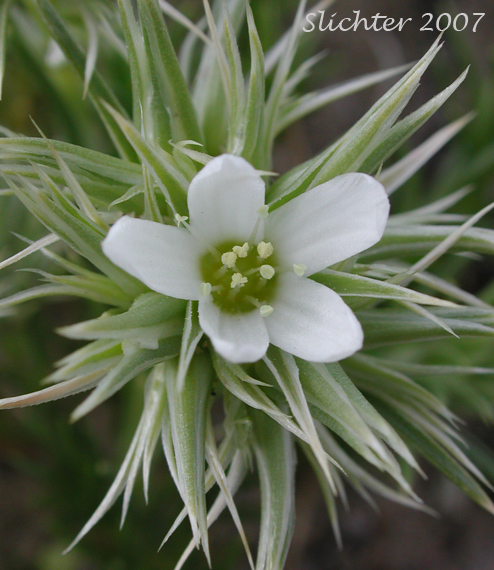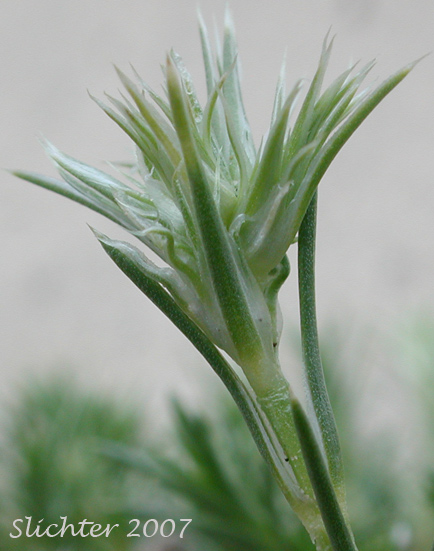
 The
photo at right shows a close-up sideview of the upper stem of franklin's sandwort as seen in sand dunes near Frenchman's Coulee on the bluffs above the eastern bank of the Columbia River several miles north of Vantage, WA..........April 30, 2007.
The
photo at right shows a close-up sideview of the upper stem of franklin's sandwort as seen in sand dunes near Frenchman's Coulee on the bluffs above the eastern bank of the Columbia River several miles north of Vantage, WA..........April 30, 2007.
Franklin's sandwort is a fairly attractive, low growing, densely tufted perennial which might be suited for a rock garden with good drainage. The numerous stems are spreading to prostrate and covered with many leaves. The flowering stems are erect and range from 3-6 cm tall. These latter stems are brittle and may shatter at the nodes. The numerous leaves are on the stems and they overlap each other. Individual leaves range from 10-20 mm long and are linear in shape and sharp pointed at the tip. The tips of the leaves spread outwards from the main axis of the stem.
The inflorescence consists of several flowers in congested cymes. The sepals are lanceolate-acuminate and range from 5-12 mm long. The white petals are narrowly spatulate-oblanceolate and range from shorter than to slightly longer than the sepals.Variety franklinii: In this variety the petals are larger with the sepals measuring 8-12 mm long with the petals shorter (by 2-3 mm) than the sepals. The cymes are more congested with the flower pedicels rarely over 1 mm long.
Variety thompsonii: In this variety the petals are smaller with the sepals measuring 5-8 mm long with the petals only slightly longer than the sepals. The cymes are not tightly congested with the pedicels from 1-4 mm long. It may be found along the Columbia River on the Oregon side from Gilliam and Morrow counties and at several locations in southeastern Wasco county.
Franklin's sandwort may be found growing on sand dunes, on open gravelly soils, in scabland, and on sagebrush slopes.
Franklin's sandwort is found east of the Cascade Mts. from central Washington south to central and southeastern Oregon and eastward along the Snake River to Butte County, Idaho and south to northwestern Nevada.